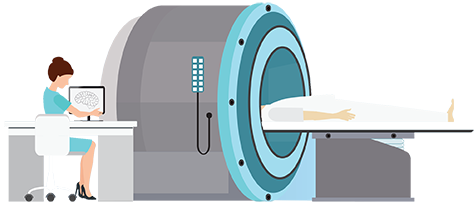

A Cardiovascular Technologist uses high-frequency sound waves to produce diagnostic images for medical purposes. They are skilled technicians that specialize in heart function and anatomy. They image the heart in different views to detect abnormalities. They look at the four chambers of the heart, valves, arteries, and veins in the heart to assess for cardiac problems. Some indications for a cardiac ultrasound or echocardiogram could be chest pain, palpitations, chest tightness, trouble breathing, or a very common indication is family history of heart disease. Many people are screened with an echocardiogram if they have a family member who has had previous heart disease at a young age.
Cardiac Sonographers have to have good communication skills with the patient in order to inform them of the procedure they are having and to answer any questions the patient might have. The Sonographer also must communicate with the Cardiologist to explain their findings and to give suggestions of the possible diagnosis. Cardiologists strongly rely on a Sonographers opinion when it comes to dictating the report and concluding a final diagnosis for the patient.
Cardiovascular Technologists or Echocardiographers have a very similar career as a general Ultrasound Technician (Sonographer). The main differences between the two modalities are the structures in the human body they are assessing and a Cardiac Sonographer generally reports their cases to a cardiologist rather than a radiologist. The typical Cardiac Sonographer works 40 hours a week in a hospital setting. However, just like the other modalities in Sonography they have the opportunity to work in a physician’s office if that fits their lifestyle more. Echocardiologist need to be physically fit as most of the day is spent standing and walking. They are highly trained professionals that work with expensive equipment daily to help diagnose cardiac disease.
The following is a list of specializations within the field of cardiovascular technology. A cardiovascular tech may be trained and educated on multiples functions and procedures and this will help to make that individual a more desirable job candidate with higher earning potential. Read the descriptions below to familiarize yourself with these functions and roles
In general, an invasive procedure is one in which there is more than simply imaging being performed. Invasive procedures involve probing or inserting devices and substances into the body in order to perform imaging and treatment procedures such as cardiac catheterization or balloon angioplasty.
EKG technicians perform tests using electrocardiography (also known as EKG’s) for stress testing. They also perform holter monitor procedures tracing electrical impulses from the heart. This involves attaching electrodes the the patient and gathering accurate readings from the equipment. Once the procedure is done, it is forwarded to the physician for analysis. Learn more about EKG technician training.
Cardiology technologists perform invasive procedures, assisting physicians with cardiac catheterization. Catherization involves threading a small tube, known as a catheter, through an artery. In the case of cardiology tech’s, it is commonly inserted through a spot on the patients groin, which leads up to the heart. The goal of the procedure is to determine if there are any blockages or irregularities in flow. If blockages are located, another procedure known as angioplasty may be performed. The cardiology technologist assists the physician as a catheter with a balloon is inserted into the artery and then used to expand the blocked area.
Echocardiographers perform non-invasive procedures with the help of ultrasound technology to examine heart functioning. They can examine the heart chambers, vessels, and valve function. The images they capture are referred to as echocardiograms and are used to determine if the valves of the heart are opening and closing properly and other metrics such as the velocity of flow in and out of the heart chambers.
Vascular tech’s assist physicians with examining problems related to vascular circulation in the body. They perform tasks involving evaluating pulses and blood flow within the arteries and veins. They use special equipment to listen to the flow and seek out abnormalities in these sounds. They also use ultrasound technology to record information such as blood flow, pressure, oxygen content, outer circulation in the periphery of the body, circulation in the brain, and more.